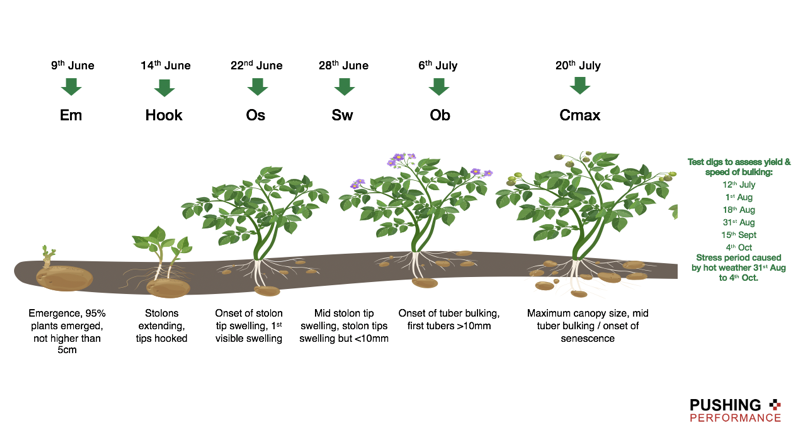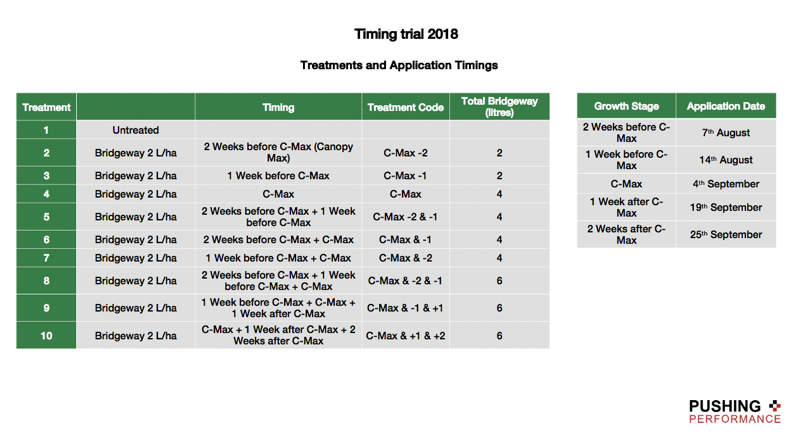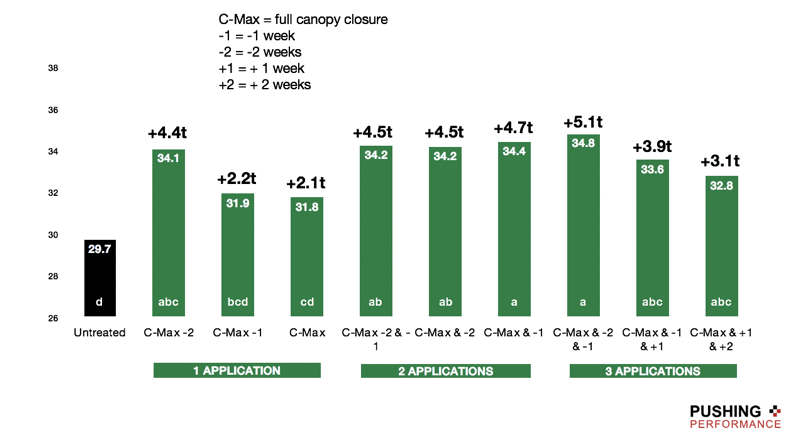Relieve stress & protect potential with Bridgeway/Zonda
Following the very dry May, the two week period of cooler, wetter weather at the start of June provided much needed relief to stressed out potato crops, which otherwise would have been at the detriment to the crop, had the hot, dry conditions continued. With the period of hot, high uv weather last week, crops will have again come under stress and may benefit from an application of Bridgeway to help kick-start tuberisation and transcription of assimilates as quickly as possible. Generally potato plants do not actively grow above 26OC as they can’t draw enough water up. This will have been particularly detrimental to any potato crops unirrigated, particularly where this may have continued for a period of 6 days or more.
Frost damaged crops in the west are also now recovering following an agronomy programme to help coax crops forward. Extra nitrogen, micro nutrients and Bridgeway/Zonda have also been employed in crops following the stress conditions of May that had slowed crop growth. Tuber growth on early crops is now rapid with reports of average to higher than average numbers against the long term average. Protecting plant health by reducing abiotic stress is now key to protect yield and quality as many crops move into stable canopy and weather conditions remain volatile and potentially stress fuelled.

Reasons to integrate Bridgeway or Zonda
Resilience and recovery from abiotic stress
Abiotic stress to potato crops during the growing phase can lead to a dramatic reduction in economic yield and quality. Drought and heat stress are two different types of abiotic stress that can both cause a wide range of physiological changes in potato plants that impact crop growth. Bridgeway and Zonda are amino acid + peptide based biostimulants designed to improve abiotic stress resilience and recovery and are approved for use in both organic and conventional crops.
Greater tolerance to temperatures above 25 OC
Potato productivity is greatly reduced at temperatures above the optimum. The earlier in the season heat stress occurs, the more negative its impact on the growth and yield of the crop as potatoes grow best in cool, frost-free environments. Temperatures above 25 OC delay tuberisation by inhibiting carbon synthesis and translocation to the stolon. Every 5 OC increase above the optimum temperature of 20 OC can decrease the rate of photosynthesis by 25%. Temperatures above 30 OC, as we experienced last week, can cause complete inhibition of photosynthesis and significantly impact the partitioning of sucrose translocation to tubers. It can also lead to tuber cracking, secondary growth and malformations such as skin russeting. The adverse affects of heat stress on the crop can be limited with Bridgeway/Zonda, which trigger stress defines mechanisms and increases the photosynthetic light conversion efficiency of the crop and translocation to the underground stem. Work conducted by CMI Ltd on Bridgeway in 2017, 2018 and 2019 has shown Bridgeway/Zonda to be particularly beneficial in crops under temperature stress, with significant yield responses as a result. The trials and the results can be viewed here.
Greater tolerance to drought stress
Drought stress in unirrigated crops can have severe consequences on yield. One of the most important strategies used by potato crops to survive drought stress is by improving water use efficiency – by reducing leaf number, leaf size, and by reducing stomatal conductance. Whilst it means the crop needs less water as a result of reduced leaf surface area, it also reduces light capture for photosynthesis, slowing starch production. Bridgeway/Zonda stimulate rooting, enabling the crop to draw on water and nutrients from depth, whilst supporting the larger canopy.
Stress protection during stable canopy
July through to August can be one of the most stressful for the crop, with ups and downs in temperature and rainfall. Bridgeway/Zonda can be used to optimise plant health throughout the period to mitigate the risks to yield and quality.
Can Bridgeway/Zonda applications still help at stable canopy?
Replicated trials have shown that a single application of Bridgeway/Zonda at the onset of tuber bulking or around full canopy closure can be highly beneficial to crop health and tuber yield.
In all trials Bridgeway has increased yield at and around full canopy closure
Tested and proven independently
Bridgeway has been tested and proven in replicated trials in 2017-2019 at CMI Ltd – 3 very different years, but all stressful for the crop at various times during the life of the crop. Bridgeway increased yields significantly at every application timing tested, in all 3 years.













